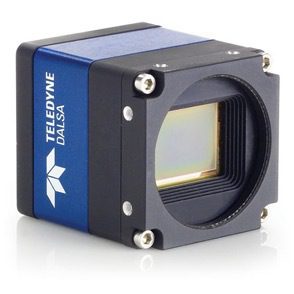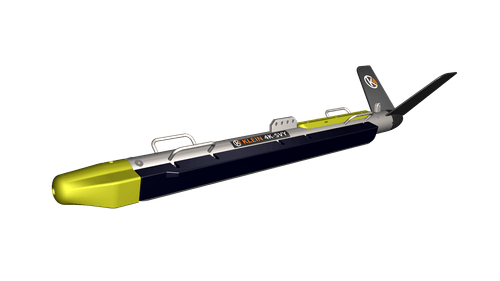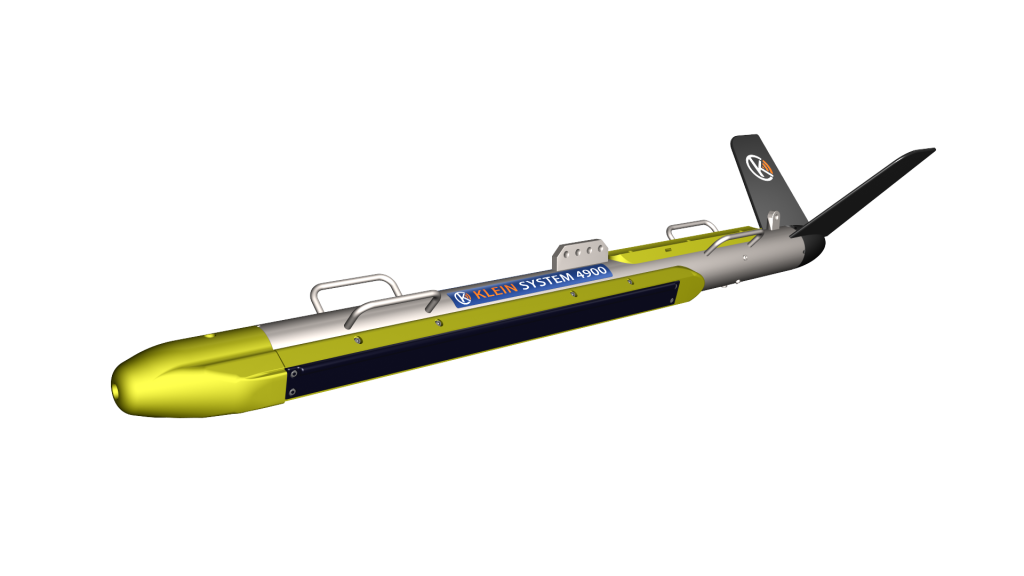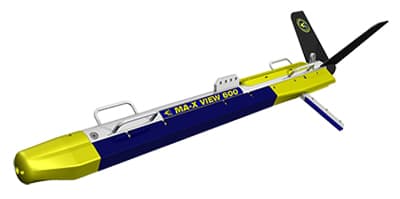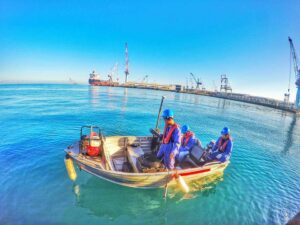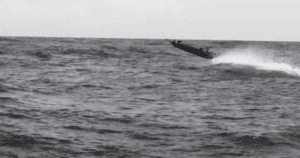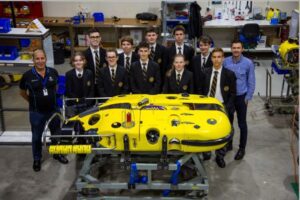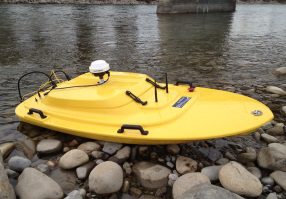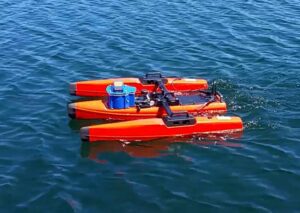MARKETS
Case Study: Camera Enclosures for Harsh Environments
We are an Australian company with a growing international reputation
focusing on the design and servicing of high quality underwater
electronics used in harsh environments.
Underwater experience ensures a reliable solution
As machine vision cameras and hardware are increasingly deployed in industrial and harsh environments, many users have the need to package their equipment for long-term survivability. BlueZone engineering is founded on the need to package equipment for some of the harshest environments that are encountered – deep sea deployment for Offshore Oil & Gas and other demanding subsea applications.
The Water Corporation of Western Australia tasked BlueZone with the requirement to design and manufacture camera housings for eight Teledyne Dalsa Genie T2041 cameras and complete with Kowa 6mm lens. The application was for mounting the cameras on a pipeline crawler for long-distance inspection of partly flooded pipelines. Both the housings and associated junction tubes needed to be as space efficient as possible. Both were designed to be waterproof to 100 m depth and a hard-anodised finish on both items was required.
The cabling arrangement included mounting four cameras with ethernet pass-through, four serial conductors and power supply conductors. The four power pairs (eight conductors), were combined inside the junction tube and a standard hose fitting was used on one end to pass through four cameras and the combined power cable.

We are an Australian company with a growing international reputation
focusing on the design and servicing of high quality underwater
electronics used in harsh environments.
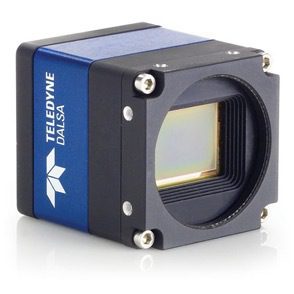
BlueZone’s approach was to build on the CC03 High Definition Drop Camera design for underwater seabed inspection to depths of 100m. The proven reliability and capability of this design were a good starting point for a camera enclosure for harsh conditions.
Full advantage of in-house 3D printing capability was taken for rapid design and manufacture of a specialised mounting bracket. This bracket enabled infinite rotation of the camera inside the housing for required alignment between cameras to support image stitching software.
Read More: High Quality and Rapid Turnaround 3D Printing for Subsea Applications
Featured Products
Klein's 4K SVY dual frequency side scan sonar was designed for use in offshore energy survey operations and is compliant with BOEM, US and European Offshore Renewable Energy, NOAA, IHO...
Read moreThe Klein System 4900 is a versatile Side Scan Sonar that can be used for many different survey, search and recovery applications. The system is easy to operate, dual frequency...
Read moreKlein Marine Systems introduces the industry’s first integrated side scan and gap filler sonar for high resolution, efficient surveys. MA-X VIEW 600 side scan sonar delivers unprecedented focused 600kHz imagery at...
Read moreLatest News
Expanding Horizons: MARVEL Micro-AUV Joins the SEABER Family
Unveiling Cutting-Edge Capabilities SEABER recently unveiled the newest addition to its cutting-edge range with the MARVEL micro-AUV. The MARVEL is setting a new standard in precision underwater exploration. The new...
Read MoreHII Mission Technologies Newest Addition: The REMUS 130 UUV
Open Architecture and Modularity Minimize Cost and Risk HII announced the newest third generation REMUS 130 unmanned underwater vehicle (UUV), which is based on the highly successful REMUS UUV series....
Read MoreSEABER YUCO-SCAN micro-AUV Demonstration
Exploring the Future of Underwater Surveys. On the 5th of February 2024, BlueZone Group successfully completed the first demonstration with the SEABER YUCO-SCAN micro-AUV at Lake Macquarie, NSW. This demonstration...
Read MoreBlueZone Group and Klein Marine Systems: Pioneering Hydrographic Advancements in Australia
BlueZone and Klein Marine Systems Illuminate Hydrographic Excellence during Dr. Peter Ramsay’s latest visit. Recently, Dr. Peter Ramsay, Director of Strategic Hydrographic Programs at Klein Marine System travelled to Perth,...
Read MoreCamera Enclosures for Harsh Environments
Underwater experience ensures a reliable solution
As machine vision cameras and hardware are increasingly deployed in industrial and harsh environments many users have the need to package their equipment for long-term survivability. BlueZone engineering is founded on the need to package equipment for some of the harshest environments that are encountered – deep-sea deployment for Offshore Oil & Gas and other demanding subsea applications.
The Water Corporation of Western Australia tasked BlueZone with the requirement to design and manufacture camera housings for eight Teledyne Dalsa Genie T2041 cameras and complete with Kowa 6mm lens. The application was for mounting the cameras on a pipeline crawler for long-distance inspection of partly flooded pipelines. Both the housings and associated junction tubes needed to be as space-efficient as possible. Both were designed to be waterproof to 100m depth and a hard-anodised finish on both items was required.
The cabling arrangement included mounting four cameras with ethernet pass-through, four serial conductors and power supply conductors. The four power pairs (eight conductors) were combined inside the junction tube and a standard hose fitting used on one end to pass through four cameras and the combined power cable
BlueZone’s approach was to build on the CC03 High Definition Drop Camera design for underwater seabed inspection to depths of 100m. The proven reliability and capability of this design were a good starting point for a camera enclosure for harsh conditions.
Full advantage of in-house 3D printing capability was taken for rapid design and manufacture of a specialised mounting bracket. This bracket enabled infinite rotation of the camera inside the housing for required alignment between cameras to support image stitching software.
Read More:
High Definition Drop Camera for seabed inspection
High Quality and Rapid Turnaround 3D Printing for Subsea Applications

